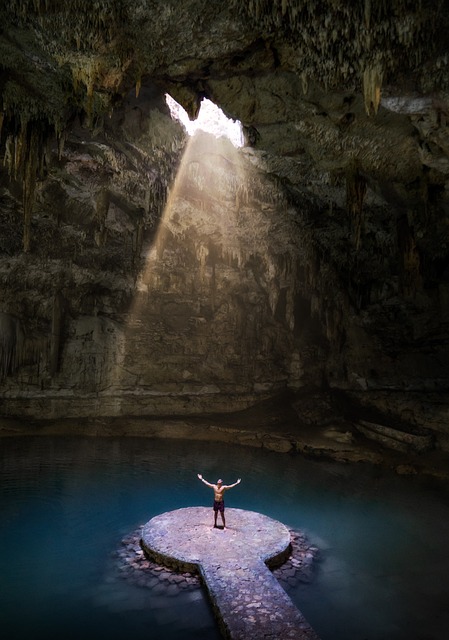Subsurface utility maps are essential visual tools that help professionals plan, construct, and maintain underground infrastructure safely. By using symbols, colors, and specialized software, these maps guide stakeholders like contractors and utility companies, minimizing damage to vital utilities during excavation. Accurate interpretation involves combining visual analysis, cross-referencing with databases, and leveraging 3D visualization software. Best practices for data integrity include regular record audits, standardized notation, open communication, and utilizing advanced GIS technologies. Effective subsurface utility mapping enhances decision-making, ensuring efficient project execution while protecting critical underground networks.
“Unveiling the secrets beneath our feet, subsurface utility maps play a pivotal role in modern infrastructure management. This comprehensive guide aims to demystify these intricate diagrams, offering expert insights on interpreting their subtle nuances. From understanding map fundamentals and deciphering symbols to mastering interpretation techniques and adhering to best practices, we equip readers with the knowledge to navigate this crucial aspect of urban planning and construction. Explore the art of subsurface utility mapping and unlock the efficiency it brings.”
Understanding Subsurface Utility Maps: An Overview
Subsurface utility maps are critical tools for visualizing and managing underground infrastructure, offering a comprehensive view of what lies beneath our feet. These detailed maps provide an accurate representation of various utilities, such as water pipes, gas lines, cable networks, and sewer systems, located beneath the surface. By integrating geospatial data with specialized software, professionals can create precise diagrams that aid in planning, construction, and maintenance activities.
Understanding subsurface utility mapping is essential for several reasons. It enables stakeholders, including contractors, utility companies, and developers, to navigate complex underground networks safely and efficiently. With accurate maps, excavation projects become less invasive and more precise, reducing the risk of damaging critical infrastructure. Additionally, these maps facilitate better asset management, allowing for proactive maintenance and informed decision-making regarding upgrades or replacements.
Key Components and Symbols in Mapping
Subsurface utility maps are a visual representation of critical infrastructure located beneath our feet, and understanding their key components is essential for effective interpretation. These maps typically include various symbols and markings that denote different types of utilities such as water mains, gas lines, electrical cables, and sewer systems. Each symbol has a specific meaning, ensuring clear communication among professionals. For instance, a solid line with a key indicates an active utility, while a dashed line might represent a decommissioned or inactive service.
Color coding is another vital aspect; different colors are assigned to distinct utility types, making it easier to identify and differentiate them. Legends or keys usually accompany these maps, providing a comprehensive guide to interpreting the symbols and colors. Proficiency in reading subsurface utility mapping is crucial for project managers, contractors, and utility companies to avoid damage during excavation, ensuring safety and efficiency in construction or maintenance activities.
Interpretation Techniques for Accurate Data Reading
Interpretation techniques play a pivotal role in accurately reading and understanding subsurface utility maps. Professionals must employ a combination of visual analysis, cross-referencing with existing databases, and utilizing specialized software tools to ensure precise data interpretation. Visual inspection involves closely examining the map’s symbols, colors, and labeling to identify different types of utilities represented. Cross-referencing with historical records and up-to-date databases helps verify the accuracy of the map and provides critical context regarding utility ownership, age, and material composition.
Specialized software programs further enhance interpretation by enabling 3D visualization, digital tracing of utility paths, and advanced data analysis. These tools facilitate more informed decision-making during excavation or construction projects, minimizing the risk of damaging buried utilities. By integrating these interpretation techniques, professionals can achieve a higher level of accuracy in understanding subsurface utility maps, ensuring safer and more efficient project execution.
Best Practices for Effective Utilization and Error Prevention
Utilizing subsurface utility maps effectively requires adhering to best practices designed to prevent errors and ensure accuracy. One key practice is maintaining detailed and up-to-date records, including regular audits of map data. This involves cross-referencing with as-built drawings and actual field measurements to verify the location, type, and condition of underground utilities. Additionally, employing a standardized notation system for mapping symbols enhances clarity, minimizing misinterpretation.
Another vital practice is fostering open communication among stakeholders, from utility companies to construction project managers. Regular meetings and clear protocols for reporting changes or anomalies in map data can help catch errors early. Furthermore, utilizing advanced technologies like GIS (Geographic Information Systems) platforms allows for more efficient data management, analysis, and visualization, thereby improving overall mapping accuracy and facilitating better decision-making processes related to subsurface utility mapping.
Subsurface utility maps are invaluable tools for navigating underground infrastructure, crucial for safe and efficient construction projects. By understanding the key components, symbols, and interpretation techniques discussed in this article, professionals can ensure accurate data reading and implement best practices to prevent errors. Armed with expert guidance on subsurface utility mapping, we can foster a more robust and error-free approach to managing our urban landscape.
